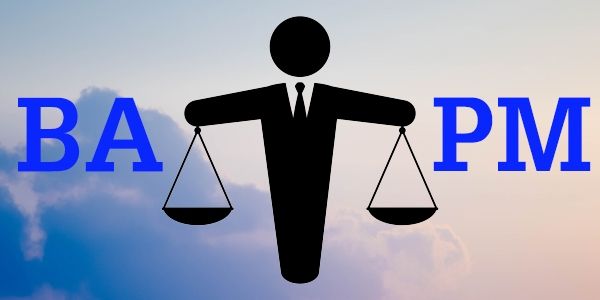Who are the Participants in the EPMM?
Across the 6 phases of the EPMM several managers and professionals will be involved. This section defines these participants and gives examples of typical position titles.
Line of Business (LOB) Managers or Directors
This is a collective manager type. There are no positions named “LOB Manager”. A LOB is a Manager or Director of a business unit that directly produces business value, usually but not always financial. An LOB Manager or Director has responsibility for a product, process or service that uses resources to directly interacts with customers or clients to produce business value.
Functional Managers
This is a collective manager type. There are no positions named “Functional Manager”. Some functional managers are resource managers. The key differentiator is whether they manage resources directly or use resources to produce business value. So, for example the Director of Marketing is a functional manager. They use the Data Warehouse (a resource) to produce a marketing plan which generates business value through increasing sales. On the other hand, the Director of Human Resources is a resource because they directly manages the human resource. One might argue that they could also be a functional manager if they manage a professional development program which produces a skill and competency inventory that is aligned with the project, program and portfolio needs of the enterprise. If we think at the role level the apparent conflict is easily resolved. In the role of managing the human resource they are a resource manager. In the role of managing the professional development program, they are a functional manager.
Resource Managers
This is a collective manager type. There are no positions named “Resource Manager”. Anyone in the organization who has total and direct stewardship responsibility over a resource that has business value. It includes those functional managers with responsibility for resources that have business value (for example, Human Resource managers (human assets); financial managers, (financial assets); sales, marketing and public relations managers, (intangible assets); IT and engineering managers, (IP and knowledge assets) and plant or equipment managers, who have stewardship over and manage the physical assets of an organization. Depending on the specific circumstances, these people are often those who, in their role function as project SPONSORS. They have decision making authority over where the assets under their charge are deployed to create expected business value. A less comprehensive set or resources was introduced in earlier editions of Effective Project Management, 6th edition (EPM6e) and can be consulted for further discussions that are out of scope for this article.
Strategy Portfolio Managers
These could be any of the above. The Strategies are established as part of the Strategic Planning Process and their managers assigned at that time. They constitute a Strategy Team whose major responsibility is to assure the delivery of expected business value through the effective use of resources across all Strategy Portfolios.
Project Managers
The project manager is the critical supporting participant who takes the resources delegated to him or her by a Strategy Manager and utilizes those resources to produce a project deliverable which hopefully will achieve the strategic objectives defined by the project sponsor. That could come in several forms:
- New product development or improvement
- Process design or improvement
- Service enhancement
So, the project manager facilitates the process of change and manages the risk of achieving that change. They are the enablers of the projects in a Strategy Portfolio.
Business analyst
It is important to distinguish between two types of Business Analysts. They can be generalists or specialists.
I’m a firm believer in complex projects having a team comprised of both specialists and generalists. The argument in support of the generalist is that they have the ability and skills to keep options open and may see solution details that would otherwise be missed. The specialist is constrained to their span of knowledge and experiences and can easily miss a clue about the undiscovered parts of the solution. The argument in support of the specialist is that only they can know if a suggested approach will work in the environment they represent. The generalist would not be able to make that call.
We know that the project manager (PM) takes the lead in managing the process for defining and solving the problem and the business analyst (BA) takes the lead in solving the problem and installing the deliverables. If you hold to this, then it is obvious that both the PM and the BA are involved in the project from beginning to end. This brings up a discussion of the role of generalists and/or specialists on the project. Calling the PM a generalist and the BA the specialist is too simplistic and usually not correct. A detailed discussion of generalists versus specialists is beyond the scope of this brief article but a few observations with respect to their roles on a project are within scope.
These five professional manager groups interact throughout the entire life span of the Strategy Portfolios from birth to death. In later chapters we will expand on each of these three manager-types and discuss their roles and interactions between and among one another.
What is the Enterprise Project RASCI Matrix?
The RASCI Matrix identifies the relationship between individuals and the major processes, phases or steps of an effort. In our case we link responsibilities of the 3 major managers and 3 support professionals to the 6 phases of the EPMM. Figure 1.8 is an operational RASCI Matrix.
Figure 1.8: EPMM RASCI Matrix
Complex Project Profiling
For our discussion of complex projects I reference a recent book by Kathleen B. Hass (2009, “Managing Complex Projects: A New Model,” Vienna, VA: Management Concepts, ISBN 978-1-56726-233-9).
There is no simple accepted definition of a complex project. The best we have to offer are some of its characteristics from the proceedings of the 2008 NASA Project Management Challenge Conference (Mulenburg, Jerry, “What Does Complexity Have to do With It? Complexity and the Management of Projects,” 2008):
“Details: number of variables and interfaces
Ambiguity: lack of awareness of events and causality
Uncertainty: inability to pre-evaluate actions
Unpredictability: inability to know what will happen
Dynamics: rapid rate of change
Social Structure: numbers and types of interactions.”
Advertisement
[widget id=”custom_html-68″]
Complex projects are filled with uncertainty and unexpected change. Complexity, uncertainty, and the pace of the project all contribute positively to project risk. Risk increases as any of these three variables increases. In most cases these projects are trying to find solutions to critical problems whose solutions have evaded even the most creative professionals. These projects can also be seeking to take advantage of heretofore untapped business opportunities without a clear path as to how to do that. If organizations are to be successful in this environment they must:
- employ management processes that are flexible;
- empower the client and the project team;
- provide an open environment in which creativity can flourish;
- base decisions on what is best for adding business value, and
- avoid encumbering project managers with non-value added work.
These are significant challenges because they require senior managers to step outside of their comfort zone and embrace frequent change and high risk.
The first bit of business for you as a member of the SMT is to understand the project environment within which your project, program, and portfolio managers and their teams must work and within that environment the challenges you will face in establishing and supporting an effective project management environment. The needs of that environment have changed dramatically in the last 15 years especially with respect to the tools, templates, and processes that support it. The result is confusion and the introduction of yet another silver bullet every Tuesday. Those silver bullets appear very enticing but let me make it clear that there are no silver bullets now nor have there ever been. There are strategies and you are going to learn them from this book but they will require work on your part in order to implement them and continuing attention from your office for them to become and remain effective in your organization. The reactions of my client organizations as they attempt to support complex project management is predictable. I offer you what I have learned over the years.
Let me try to put this in a context that relates directly to the SMT. A recent worldwide survey (IBM, 2010, “Capitalizing on Complexity: Insights from the Global Chief Executive Officer Study” GBE03297-USEN-00) conducted by IBM from September 2009 through January 2010 reported that over half of the 1541 executives from the 60 countries that they interviewed admitted that they were not prepared to support the complex and uncertain environment in which they were forced to conduct business and they didn’t know what to do about it. If that isn’t a wake-up call to action, I don’t know what is.
The following quote from that IBM report highlights the efforts of standout organizations to manage complexity. Their efforts provide a roadmap for us.
“The effects of rising complexity call for CEOs and their teams to lead with bold creativity; connect with customers in imaginative ways, and design their operations for speed and flexibility to position their organizations for twenty-first century success. To capitalize on complexity, CEOs:
Embody creative leadership.
CEOs now realize that creativity trumps other leadership characteristics. Creative leaders are comfortable with ambiguity and experimentation. To connect with and inspire a new generation, they lead and interact in entirely new ways.
Reinvent customer relationships.
Customers have never had so much information or so many options. CEOs are making “getting connected” to customers their highest priority to better predict and provide customers with what they really want.
Build operational dexterity.
CEOs are mastering complexity in countless ways. They are redesigning operating strategies for ultimate speed and flexibility. They embed complexity that creates value in elegantly simple products, services and customer interactions.”
The messages from this survey are clear and validate the goal of this book. The solution offered herein is a logical approach to mitigating the complexity problem that over half of the CEOs interviewed admitted having. Which half of the population do you align with? If you want to prepare yourself to handle complexity, this book is mandatory reading and prepares you to take action. If you are a standout organization, congratulations but you should still read this book because in these pages you will find some gems to help you stay on top of changing complexity and uncertainty.
There was a time when you may have distanced yourself from projects. Your feeling was that projects were operational level activities and of little importance to someone at your management level. In the past 20 years you’ve probably rethought that position and now see projects as investments and part of a portfolio that has an investment strategy. You may in fact be the manager that determines that strategy. For that reason you are challenged to do what you can to maximize the return on investment (ROI) to your organization from the projects you recommend for the portfolio and that you support directly. How you have responded to this situation depends on your roles and responsibilities with respect to the project, the project teams, and the portfolio. You may have primary responsibility for supporting or managing project managers or have a role supporting those who do have primary responsibility for supporting or managing project managers. In any case, this book offers you the advice you will need to help you and your organization succeed.
The business environment has changed significantly in the last 20 years and has ushered in new project management challenges that the old ways simply cannot support. Business as usual with respect to projects no longer works and may have never worked. Contemporary projects are projects of high complexity and great uncertainty and you must deal with them under those conditions. All of the simple projects have been done! Specifically,
- Complex project managers need the confidence and support of their management
- Complex project teams must be empowered so they can be successful
- Complex project portfolios must be aligned with staff resources
- Complex projects are unique and so are their management approaches
- Complex projects are high-risk projects
- Complex projects require a creative approach to discovering solutions
- Complex project require meaningful client involvement
- Complex projects require flexible support services
In the pages that follow you will see just how you can and must positively impact all of these challenges. So let’s get started with a brief introduction to the complex project environment. Understanding that environment is the foundation on which you will be able to build your support strategy.
Kathleen B. Hass (2009, Managing Complex Projects: A New Model, Vienna, VA: Management Concepts, ISBN 978-1-56726-233-0) offers the most in depth treatment of complexity that we have. She describes complexity in terms of:
- Time, Cost, and Size
- Team Composition and Performance
- Urgency and Flexibility of Cost, Time, and Scope
- Clarity of Problem, Opportunity, and Solution
- Requirements Volatility and Risk
- Strategic Importance, Political Implications, Multiple Stakeholders
- Level of Organizational Change
- Risks, Dependencies, and External Constraints
- Level of IT Complexity
In a paper written shortly after her book was published (Presented at the 2010 PMI Global Congress Proceedings, Washington, DC) she updates the complexity definition with a four-point scale (Independent Projects, Moderately Complex Projects, Highly Complex Projects, and Highly Complex Programs) and displays the values for a specific project in the form of a spider chart. Figure 1.10 is a hypothetical example adapted from her updated definition and published with her permission.









